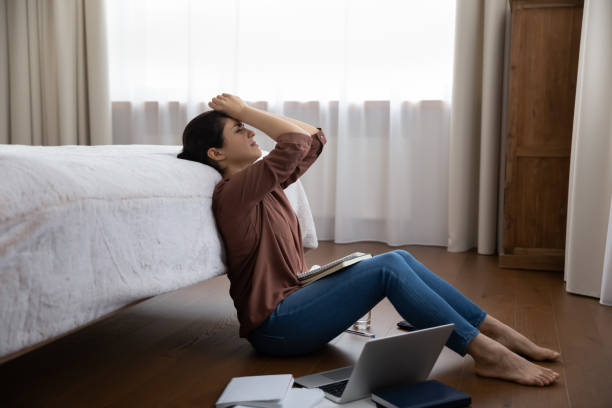Overview
-
Technology’s impact on sleep patterns is significant, with both positive and negative effects.
-
While advancements like sleep tracking and sleep-enhancing gadgets offer benefits, excessive screen time, blue light exposure, and disruptions from notifications can disrupt sleep patterns.
-
To maintain a healthy sleep routine, establish a technology curfew, use blue light filters, create a sleep-friendly environment and prioritize sleep hygiene.

Technology on Sleep-Patterns
In our contemporary society, the prevalence of technology is undeniable, seamlessly woven into the fabric of our daily routines.
With its myriad advantages also come a few hurdles, particularly in maintaining optimal sleep patterns.
The overindulgence in electronic devices, ranging from smartphones to tablets and laptops, can profoundly disturb our natural sleep patterns.
This piece endeavors to delve into the profound impact of technology on our sleep patterns while equipping you with actionable strategies to establish and nurture a restful and rejuvenating sleep routine.

Maintaining a Normal Sleep Patterns: Strategies and Tips
1. Understanding the Impact of Technology on Sleep
Technology and Artificial Light
The prevalent utilization of electronic devices subjects us to the influence of artificial light, predominantly in the form of blue light, exerting a substantial influence on our sleep patterns.
Deep within our bodies, our physiological processes dance to the rhythm of a remarkable system called the circadian rhythm.
This internal clock tirelessly orchestrates our sleep-wake cycle, ensuring harmony in our daily routines.
However, when we encounter the glow of blue light during the evening hours, this delicate balance is disrupted.
Blue light has the power to suppress the production of melatonin, a hormone that plays a crucial role in initiating sleep.
As a result, the dimming of melatonin levels can create hurdles in our ability to effortlessly drift into a peaceful slumber at night.
Moreover, the constant stimulation provided by technology can make it difficult for our minds to unwind and relax before bed.
Engaging with social media, emails, or engaging in intense gaming sessions can activate our brains and keep us mentally alert, making it challenging to transition into a restful state.
2. Strategies for Healthy Sleep Patterns
Establishing a Pre-Sleep Routine
Creating a consistent pre-sleep routine can signal to your body that it’s time to wind down and prepare for sleep.
Designate a specific period before bed for relaxation and activities that promote a calm state of mind. Consider incorporating the following practices into your routine:
-
Relaxation Techniques: Engage in activities that help you relax, such as reading a book, taking a warm bath, practicing meditation or deep breathing exercises, or listening to soothing music.
-
Avoiding Electronic Devices: Minimize or eliminate the use of electronic devices at least one hour before bed. Instead, choose activities that are less stimulating, such as reading a physical book or engaging in light stretching.
-
Creating a Calming Environment: Dim the lights in your bedroom, use blackout curtains or an eye mask to block out external light, and maintain a comfortable temperature to create a sleep-friendly environment.
Setting Boundaries for Technology
To maintain a normal sleep pattern, it’s crucial to set boundaries for technology use, both in the evening and throughout the day. Consider implementing the following strategies:
-
Establishing Tech-Free Zones: Designate certain areas in your home, such as the bedroom, as tech-free zones. Keeping electronic devices out of these areas helps create an environment conducive to relaxation and sleep.
-
Implementing Digital Detox Days: Dedicate specific days or hours of the day as “digital detox” time, where you disconnect from all electronic devices.
Use this time to engage in activities that promote physical activity, face-to-face interactions, and hobbies that don’t involve screens.
-
Using Night Mode and Blue Light Filters: Activate the night mode feature on your devices or install blue light filter applications.
These tools reduce the amount of blue light emitted by your screens, making it easier on your eyes and minimizing the impact on your sleep patterns.
Creating an Ideal Sleep Environment
Optimizing your bedroom conditions can significantly contribute to a normal sleep pattern. Consider the following tips:
-
Comfortable Bed and Pillow: in a comfortable mattress and pillow that support your body and align your spine properly. The right sleep surface can enhance your sleep quality.
-
Darkness and Noise Control: Use blackout curtains or an eye mask to eliminate unwanted light, and consider using earplugs, a white noise machine, or a fan to mask disruptive sounds.
-
Temperature Regulation: Keep your bedroom at a cool, comfortable temperature. Research suggests that a slightly cooler room promotes better sleep quality.





